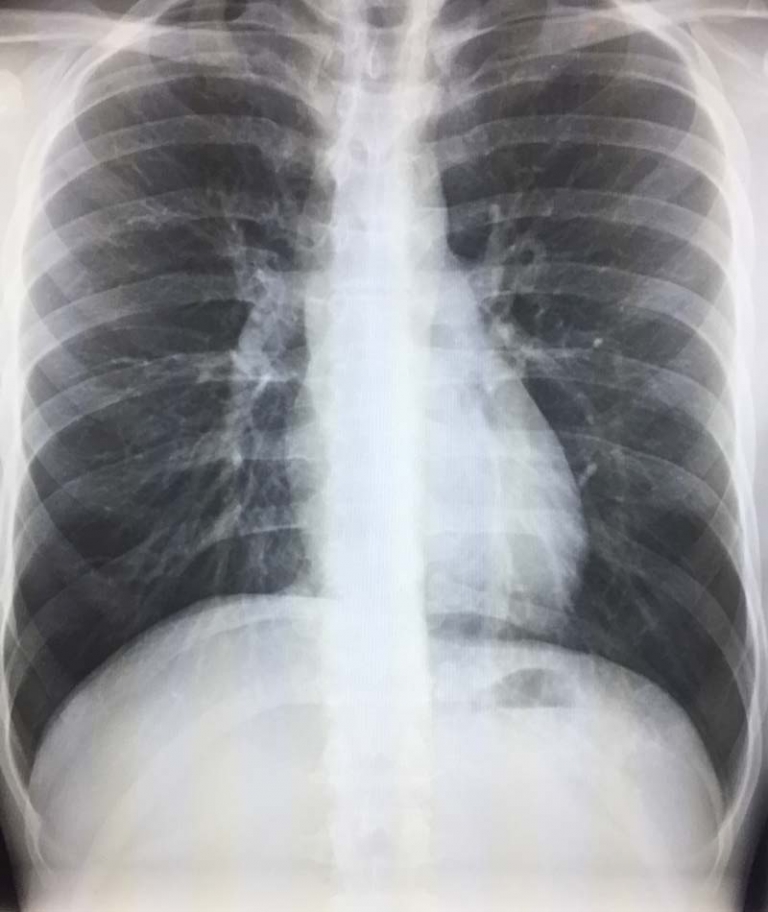Nuclear Medicine Lung Scan
A nuclear medicine lung scan provides information about the blood flow and airflow to the lung.
This is a two part test. Radioactive matter will be injected into a vein for the blood flow (perfusion) part of the test. Radioactive matter will be inhaled for the airflow part (ventilation).
The test is most commonly done to detect blood clots to the lungs or pulmonary emboli.
What is a nuclear medicine lung scan?
The nuclear medicine lung scan is a way to get a picture of how both blood and air flows to the lungs. This test is done using a small amount of radioactive matter which sends out gamma rays. These are detected by a scanner and make a picture of your lungs.
The radioactive matter that is injected or inhaled will not go to areas of the lung that have no blood or airflow.
Comparing the pictures of the perfusion (blood flow) and ventilation (airflow) can provide important information and help diagnose life threatening conditions like pulmonary emboli.
How is the test interpreted?
A blood clot will usually have a ventilation perfusion mismatch. That is the part of the lung involved will have normal airflow but no blood flow because it is blocked from the clot.
An airway obstruction usually causes both the blood and airflow to not be present in the involved lung. This is called a matched defect.
The results of the test are usually provided as a probability of pulmonary embolism- low, intermediate or high. There are published criteria used by radiologists and nuclear medicine physicians for diagnosis.
During COVID, many facilities have begun using only perfusion lung studies. These are done without the ventilation scans. The perfusion scan is interpreted along with the chest X-ray as being a matched or mismatched defect.
Indications for nuclear lung scan
Most commonly this is done to diagnose blood clots to the lungs. Symptoms like chest pain, fast heart rate, shortness of breath will often accompany a pulmonary embolism.
Nuclear medicine lung scans are also done to evaluate chronic lung diseases like emphysema. The scans can also be done to evaluate the lungs before surgery is performed.
What can nuclear lung scan diagnose
Primarily this test is used to diagnose blood clots to the lungs (pulmonary emboli).
Other indication can include lung function prior to having a lung resection or after a lung transplant.
How to prepare for a lung scan
Pregnancy status is important to communicate. This test is done in pregnant patients although alternatives like a CT scan can be considered.
Breast feeding may need to be delayed for 24-48 hours after the test as radiation can be passed through the breast milk.
You will be asked to change into a gown and remove all jewelry.
Fasting or withholding medications is usually not required prior to a nuclear medicine lung scan.
A chest x ray is usually performed within 24 hours of doing the test. This is needed for proper interpretation.
Nuclear lung scan side effects
Side effects are very rare. There may be some discomfort after the injection. Allergic reactions are extremely uncommon.
Nuclear medicine lung perfusion scan
You will have an IV started so that the radiotracer can be injected. You will be lying flat on the table while the pictures are collected. This can take up to 30 minutes.
Nuclear medicine lung ventilation scan
You will often be required to breathe the tracer in through a face mask. You will then be asked to hold your breath. After the tracer has collected in your lungs, you will be asked to breathe normally as the tracer leaves your lungs. This part can take up to 20 minutes.
Nuclear lung scan: summary
Nuclear medicine lung scans are commonly done tests to assess both the blood and air flow to the lung. Comparing the blood and airflow pictures of the lungs allows us to evaluate for pulmonary embolism. The results of the test are often interpreted with probabilities instead of present or not present like with CT tests.

